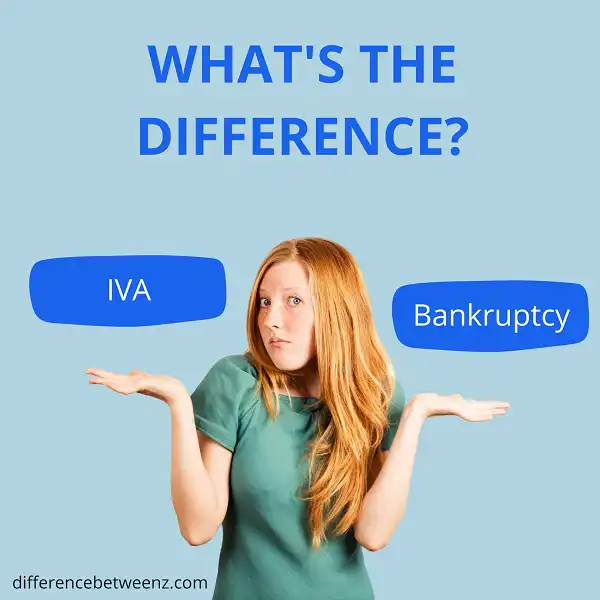Which is the better option for you when you are struggling with debt: an IVA or bankruptcy? This is a question that many people ask, and the answer is not always clear. In this blog post, we will explore the key differences between these two options so that you can make an informed decision. Keep in mind, however, that we are not lawyers and cannot give legal advice. If you are considering either of these options, please consult a qualified attorney.
What is IVA?
- IVA stands for Individual voluntary arrangement. It is a formal insolvency agreement between you and your creditors to pay off your debts over a fixed period of time, usually 5 years.
- Under an IVA, you make regular payments to an insolvency practitioner who then distributes the money among your creditors. IVAs are a type of debt relief order and are only available in England, Wales, and Northern Ireland. If you live in Scotland, you can apply for a trust deed instead.
- IVAs are often seen as a last resort for people with debt problems, as they can have a serious impact on your credit rating and make it difficult to get credit in the future. However, they can be an effective way of dealing with debt and avoiding bankruptcy. If you’re considering an IVA, it’s important to get advice from a qualified insolvency practitioner to make sure it’s the right option for you.
What is Bankruptcy?
Bankruptcy is a legal process that provides debt relief for individuals and businesses. It is a court-supervised process that allows debtors to restructure or eliminate their debts. Bankruptcy can be filed by an individual, a business, or a municipality. There are several types of bankruptcy, each with its own set of rules and procedures. The most common types of bankruptcy are Chapter 7, which is known as liquidation bankruptcy, and Chapter 13, which is known as reorganization bankruptcy. Bankruptcy can be a complex and confusing process, but it provides an important safety net for those who are struggling with debt. Bankruptcy can help you get a fresh start and provide relief from your creditors.
Difference between IVA and Bankruptcy
IVA and Bankruptcy are both debt relief options available to individuals who are struggling to repay their debts. However, there are some key differences between the two.
- IVA stands for Individual Voluntary Arrangement, and it is a formal agreement between an individual and their creditors. Under an IVA, the individual agrees to repay their debts over a period of time, typically five years.
- Once the IVA has been successfully completed, any remaining debt is written off. In contrast, bankruptcy is a legal process that results in an individual’s assets being sold off in order to repay their debts.
- Unlike an IVA, bankruptcy does not guarantee that all of the debt will be repaid. However, it does provide individuals with a fresh start, allowing them to rebuild their finances.
Conclusion
If you’re struggling with overwhelming debt, you may be wondering what the difference is between an IVA and bankruptcy. Both offer a way to get out of debt, but they have different benefits and drawbacks. An IVA is typically less damaging to your credit score than bankruptcy, and it can help you keep some of your assets. Bankruptcy, on the other hand, offers more immediate relief from debt, but it will damage your credit score for years to come. It’s important to weigh the pros and cons of each option before making a decision.


